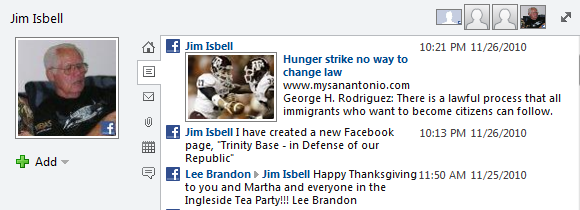Business Continuity is a moving target. How do you keep your business going when part or all of it is down? We had that experience Saturday, Sunday and today when the main office power went out and stayed out.
We have no idea what Detroit Edison was doing or why. We didn’t lose power during the storms. But on Saturday up went generators for the traffic lights all over town and down when the power. We played pass the generator with a group of neighbors so everyone could keep the cool cool and frozen nearly frozen. This is the kind of neighborhood where neighbors come to your rescue and step up to help without being asked. The outage was obviously planned. Detroit Edison was seen pulling new lines all over town with at least a dozen crews. Seems like a strange time for a network overhaul, and I would have really appreciated a flyer or phone call to give us the heads up…but I guess they have their reasons.
Here at Harbor Computer Services we have a business continuity plan of sorts. It will be an official plan as soon as I write it down. Until now it was theoretical because it was untested. But now it’s been tested. We’ll make corrections, a few changes and then write it down. It won’t be the whole plan but it’ll be the what if our server, our Internet and phones go down portion of the plan. For us, that’s the bulk of it.
This power outage exposed just how well our distributed business model actually works. Since each person works from a different location only 2 of 5 people were without computers. Since we use VOIP, we can redirect the business phone line to a cellphone. Since we all have cellphones you can still reach us. Since our spam solution includes email archiving we’re able to view new email and send it when our server is down. Since Outlook is configured for local caching each person has access to past email, calendar and contacts. Since we use off-line folders access to data files is available to each person locally.
There are a couple of additional features in our server that would be nice to access. So one of the things we’ll be looking at is keeping an up-to-date image we can mount in a data center as a temporary server. With business continuity the goal isn’t always to provide complete functionality but to provide critical functions that can keep your business running. The closer you get to complete function the more expensive it is. The key is to know how long you can go without a particular function and to prioritize them according to value. Highest value = shortest amount of time we can go without this thing. The shorter the time you have to have that function the more money it will cost. The rule is to be realistic. Businesses can usually go without accounting software until pay day happens. But when pay day gets here, it’s critical. The business continuity plan might include making sure you have payroll ready X number of days before it’s due – always. Because it’s cheaper than making sure you can have your accounting software up and running with 4 hours during an emergency on payday.
So as fate would have it in May 2 of us attended a crisis management and disaster recovery conference. In July we were tested with various types of system failures and personal disasters. In August we were tested with a major power outage. We’ve come through well, thanks in part to what we studied. Now we’re also experienced.
Amy


